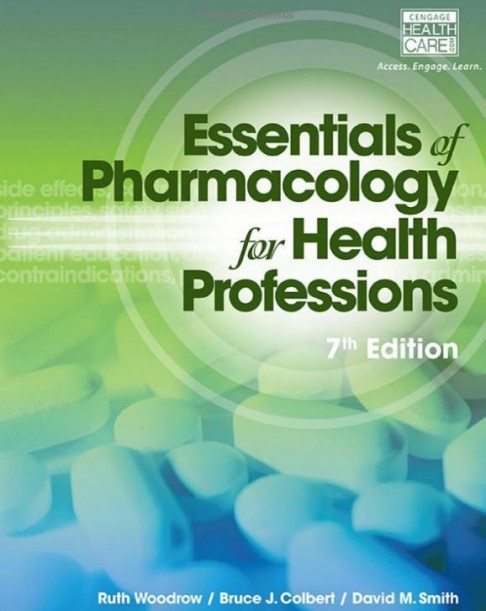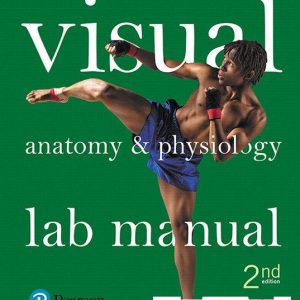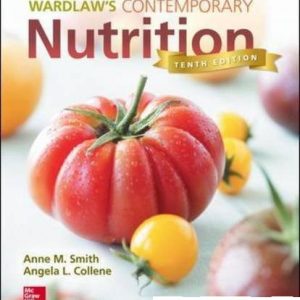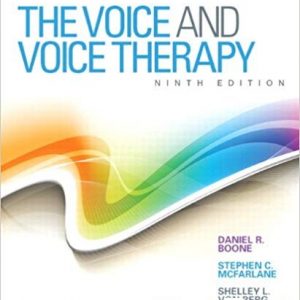Instant download Essentials of Pharmacology Health Professions 7th Edition Woodrow Colbert Smith Test Bank pdf docx epub after payment.

- Drug standards require that all preparations called by the same drug name must be of uniform .
- effectiveness and reliability
- cost, availability, and distribution method
- dosage and route of administration
- strength, quality, and purity
ANSWER: d
- A friend of yours is complaining about the latest drug recall, which has affected her grandmother’s heart She asks you whether there are any standards to ensure that a medication is consistent with the claims of its label. How should you respond?
- Sure, any reliable drug reference will do
- Yes, the Controlled Substances Schedule
- Possibly, but only if the physician signed a legal document
- Yes, the United States Pharmacopeia and National Formulary
ANSWER: d
- Which legislation requires that drug preparations containing dangerous ingredients have a labeled container indicating the ingredient?
- Pure Food and Drug Act
- Controlled Substances Act
- Drug Adulteration Prevention Act
- Federal Food, Drug, and Cosmetic Act
ANSWER: a
- What was the first law in the United States to require all drugs marketed in the United States to meet minimal standards of strength, purity, and quality?
- Federal Food, Drug, and Cosmetic Act
- Pure Food and Drug Act
- Controlled Substances Act
- Drug Adulteration Prevention Act
ANSWER: b
- What are legend drugs?
- Drugs that are exceptionally safe and effective
- Drugs that have the phrase “Caution—federal law prohibits dispensing without a prescription” on the label
- Drugs that are manufactured before the Pure Food and Drug Act and therefore exempt from regulation
- Drugs that have limited profitability because they are used to treat rare illnesses
ANSWER: b
- Quinn hears on the news that the FDA has asked a company to withdraw a Under what circumstances can the FDA do this?
- when more effective alternatives are available
- never, because only the DEA can do this
- when it is no longer profitable
- when the benefits of a drug outweigh its risks
ANSWER: d
- What legislation was created in response to a 1937 incident in which an inadequately tested drug caused the deaths of 100 people?
- Drug Adulteration Prevention Act
- Pure Food and Drug Act
- Controlled Substances Act
- Federal Food, Drug, and Cosmetic Act
ANSWER: d
- What legislation requires that new drugs be approved before they are released to the public?
- The Drug Adulteration Prevention Act
- The Federal Food, Drug, and Cosmetic Act
- The Pure Food and Drug Act
- The Controlled Substances Act
ANSWER: b
- Your friend, Thomas, had a serious adverse reaction to an over-the-counter medication and found that a number of other individuals had similar adverse Which agency is most likely to investigate this situation and take action if a problem is found?
- Food and Drug Administration
- United States Pharmacopeia
- National Formulary Enforcement
- Drug Enforcement Agency
ANSWER: a
- What agency was established by the Federal Food, Drug, and Cosmetic Act?
- The Schedule of Controlled Substances Oversight Committee
- The United States Pharmacopeia and National Formulary
- The Drug Enforcement Administration
- The Food and Drug Administration
ANSWER: d
- What agency would you expect to inspect plants where food, drugs, medical devices, and cosmetics are made?
- The Drug Enforcement Agency
- The Food and Drug Administration
- The National Formulary
- The Inspector General
ANSWER: b
- In what context are you most likely to see references to USP/NF?
- Characterization of addiction and abuse potential
- Identification of indications and contraindications
- Discussion of drug standards
- Warning labels
ANSWER: c
- What agency was established as a result of the Controlled Substances Act?
- The Drug Enforcement Administration
- The National Institute on Drug Abuse
- The Food and Drug Administration
- The United States Pharmacopeia
ANSWER: a
- After losing your cousin to an overdose of cocaine, you decide to get involved in law enforcement activities related to illicit Which agency is most likely to interest you?
- Food and Drug Administration
- Drug Enforcement Administration
- Substance Abuse and Mental Health Services Administration
- National Institute on Drug Abuse
ANSWER: b
- Ian, a registered nurse, maintains that he is not a drug abuser, so the 1970 Controlled Substances Act has no relevance for Is he right?
- Yes, except that his state licensing board may place additional restrictions on
- Yes, as long as he does not abuse drugs, this act does not impact
- No, as long as he is careful to avoid the appearance of impropriety and is generally responsible in his all aspects of
- No, because the act lays out his responsibilities with respect to record keeping and administration of controlled
ANSWER: d
- You’re waiting in line at the pharmacy to get your medication, and decide to take a look at your doctor’s handwriting on the You notice the phrase “DEA Number” followed by a code. What does the phrase “DEA Number” represent?
- The code required to determine whether the drug is reimbursable
- The physician’s license number for your state
- The drug standards met by the medication prescribed for you
- The registration number for physicians who prescribe controlled substances
ANSWER: d
- Under the schedules used in the United States, which drugs have high abuse potential and can be dispensed only with a written prescription?
- 5 (C-V)
- 2 (C-II)
- 1 (C-I)
- 3 (C-III)
ANSWER: b
- Drugs on which schedule may have prescriptions written out by a health care practitioner, but must be signed by the physician?
- 2 (C-II)
- 3 (C-III)
- 1 (C-I)
- 4 (C-IV)
ANSWER: d
- Which schedule includes cough suppressants containing codeine and medications for diarrhea?
- 3 (C-III)
- 1 (C-I)
- 5 (C-V)
- 4 (C-IV)
ANSWER: c
- To which schedule do mescaline and ecstasy belong?
- 4 (C-IV)
- 1 (C-I)
- 3 (C-III)
- 2 (C-II)
ANSWER: b
- According to your text, who is an excellent resource for you when you are unsure of your legal responsibilities with drugs or have uncertainties about drug therapy?
- a local pharmacist
- a DEA agent
- a pharmaceutical sales representative
- an attorney
ANSWER: a
- Your friend is working at a group home for people with severe developmental disabilities and tells you he administers You know he is not a doctor or nurse and is not, in fact, any sort of licensed health professional. Is this legal?
- Possibly, as long as a registered nurse is standing right beside him when he administers
- Probably, but only the physician is aware of what’s happening, and if the information is kept
- Yes, because unlicensed assistive personnel can legally administer
- Absolutely not, because the facility can lose its license and certification for allowing
ANSWER: c
- Jesse often complains about government regulation and maintains that only drugs with potential for abuse or addiction should require What other medications require prescriptions in the United States?
- Those that have the potential for serious adverse effects if taken improperly
- Those that are covered by insurance or other reimbursement sources
- Those that are still protected by patents
- None; only controlled substances need prescriptions in the S.
ANSWER: a
- After being hospitalized for heart failure, 72-year-old Donna returns home with prescription With a renewed focus on her health, she also decides to start taking herbal supplements. Can this create problems?
- Possibly, but only if she is also taking incorrect doses of the prescription
- Possibly, but only if she takes higher doses of the herbal supplements than recommended on the
- No, because manufacturers must prove that herbal supplements are safe before marketing
- Yes, because herbal supplements can interact with many medications – she should consult her physician
ANSWER: d
- What is the term for drugs used to treat rare diseases that, because they will be used for so few people, have low profitability?
- low margin drugs
- compassionate use drugs
- generic drugs
- orphan drugs
ANSWER: d
- Finlay has metastatic colon cancer and is taking an agent that stops the tumors from being able to form blood This type of drug is called a(n) .
- antiangiogenesis drug
- biologically active drug
- tacrine-type drug
- anxiolytic
ANSWER: a
- In the 1990s, an investigational new drug was developed to slow the progression of Alzheimer’s, but it was subsequently removed from the market due to liver What was this drug?
- Cognex
- Retrovir
- Caduet
- Roferon
ANSWER: a
- A research team recently identified a gene associated with epidermolysis bullosa, a disease that causes skin to blister and tear with even slight friction, by searching through a massive database of genetic information using powerful This use of computers is an example of .
- disease DNA
- genetic mining
- bioanalysis
- chemoinformatics
ANSWER: d
- Orianna’s insulin was made using the DNA of two different What is this technique called?
- gene therapy
- cloning
- recombinant DNA
- pharmacogenetics
ANSWER: c
- After identifying a gene that causes the skin of patients with epidermolysis bullosa (EB) to be easily blistered and torn, researchers have found a method to make the gene produce collagen needed for healthy skin, at least in the Researchers hope to be able to use the same process in real life, and enable patients with EB to have healthy skin. “Fixing” malfunctioning genes is an example of .
- transgenics
- gene therapy
- mutagenics
- translocation
ANSWER: b
- Your cousin is started on medication after being diagnosed with Because he experiences seizures quite often, he starts with a very large dose of the anticonvulsant to elevate the levels of the drug in his blood as quickly as possible. This initial, large dose is known as a(n) .
- overdose
- loading dose
- shock dose
- therapeutic dose
ANSWER: b
- The cellular changes produced by drugs are known as drug .
- interactions
- actions
- effects
- impacts
ANSWER: b
- The physiologic changes produced by drugs are known as drug .
- actions
- effects
- interactions
- impacts
ANSWER: b
- After experiencing several dangerous blood clots, Blair is prescribed an She initially takes high doses to get her blood levels of the anticoagulant up as quickly as possible, and then is placed on a lower dose for the foreseeable future. This latter, lower dose is referred to as a .
- routine dose
- standard dose
- maintenance dose
- loading dose
ANSWER: c
- Your friend has recently had a baby, and visits her doctor because of a terribly sinus The doctor wants to know whether she is breastfeeding her baby. What drug process is of concern?
- absorption
- distribution
- metabolism
- excretion
ANSWER: b
- The process of a drug being broken down and altered to more water-soluble by-products is known as .
- biotransformation
- degradation
- disassembly
- solubility
ANSWER: a
- Why are persons with liver failure particularly prone to experiencing the toxic effects of medications?
- They do not excrete the medication
- They distribute the medication
- They are unable to properly metabolize the
- They absorb the medication too
ANSWER: c
- Drug information for prescribing a certain medication indicates that it should be used with extreme caution in patients with impaired kidney What drug process is likely of concern?
- absorption
- metabolism
- excretion
- distribution
ANSWER: c
- Ozzie’s doctor tells him not to take his tetracycline with dairy products because the calcium in the dairy products will form an insoluble complex with the What is this process called?
- chelation
- adsorption
- oxidation
- excretion
ANSWER: a
- The instructions for your medication state to “Take on an empty ” What drug process will taking the medication on an empty stomach most likely affect?
- absorption
- distribution
- metabolism
- excretion
ANSWER: a
- Briella is given probenecid along with penicillin in order to build up the level of penicillin by decreasing its The effect of the probenecid is called .
- synergism
- potentiation
- antagonism
- agonism
ANSWER: b
- Zach normally takes an antianxiety medication and, after he has his wisdom teeth pulled, takes a narcotic pain medication as He suddenly finds himself very drowsy and disoriented. This is an example of .
- undesirable antagonism
- desirable synergism
- desirable antagonism
- undesirable synergism
ANSWER: d
- Will visits the emergency room because of a badly broken He is given a narcotic pain killer, but quickly becomes extremely dizzy and disoriented, and vomits. Will is then given another medication, naloxone, and soon begins to feel better. The effect of naloxone on the narcotic pain killer is known as .
- undesirable antagonism
- desirable antagonism
- desirable potentiation
- undesirable potentiation
ANSWER: b
- Drugs with an alkaline pH are best absorbed in the .
- large intestine
- mouth
- stomach
- small intestine
ANSWER: d
- You are reading about the treatment of cardiovascular disease and learn that some medications are more effective in African Americans than persons of other The study of why medications vary in effectiveness among groups is known as .
- genetic therapy
- epigenetics
- behavioral genetics
- pharmacogenomics
ANSWER: d
- Your uncle takes nitroglycerin, a vasodilator, for angina, a type of chest When he feels pain from angina, he places a nitroglycerin tablet under his tongue and lets it dissolve. This route of administration is known as .
- subcutaneous
- sublingual
- buccal
- transdermal
ANSWER: b
- What route of administration is the easiest, but is often slower than other routes?
- subcutaneous
- oral
- IM
- IV
ANSWER: b
- Your healthy and active grandfather strains his back while helping you move your You have injured your back as well, so you give him the same over-the-counter pain reliever as the one you take, and in the same dosage. Unfortunately, your grandfather quickly develops severe stomach pain and is found to be bleeding into his stomach. What has he experienced?
- contraindication
- adverse reaction
- abnormal reaction
- secondary interaction
ANSWER: b
- Your friend is given an antianxiety medication before a medical Rather than relaxing, however, your friend becomes agitated and starts shouting at people. This type of reaction is known as a(n) .
- reversal
- anaphylactic reaction
- antagonistic reaction
- paradoxical reaction
ANSWER: d
- The decreased response to a drug that develops after repeated doses are given is known as .
- physical dependence
- dose-response paradox
- withdrawal
- tolerance
ANSWER: d
- The fat soluble vitamins are .
- A, C, E
- C, D, K, and folate
- the B vitamins
- A, D, E, and K
ANSWER: d
- Megan has been taking 65,000 units of vitamin A per What is she risking with this dosage?
- night blindness
- joint and muscle pain
- impaired immunity
- delayed wound healing
ANSWER: b
- In adults, neuritis, dermatitis, nausea, vomiting, and depression are associated with .
- B2deficiency
- B12deficiency
- B1deficiency
- B6deficiency
ANSWER: d
- Your patient presents with night blindness, anorexia, weight loss, dry skin and eyes, and What should you suspect?
- vitamin E overdose
- vitamin A deficiency
- folate deficiency
- excess B12
ANSWER: b
- Patients who are vitamin K deficient or on oral anticoagulants may experience bleeding if they overdose on vitamin
____.
- E
- C
- D
- A
ANSWER: a
- Irving takes an What vitamin may cause bleeding if he takes more than 1,200 units?
- D
- A
- E
- K
ANSWER: c
- Freezing food results in substantial loss of .
- B1
- B6
- B2
- B12
ANSWER: b
- Pernicious anemia is associated with deficiency of vitamin .
- B2
- B6
- B1
- B12
ANSWER: d
- Folic acid can interfere with the action of .
- thiazide diuretics
- colchicine
- digoxin
- phenytoin
ANSWER: d
- The vitamin that is responsible for regulating the absorption and metabolism of calcium and phosphorus for healthy bones and teeth is vitamin .
- E
- A
- C
- D
ANSWER: d
- Illyich is a 58-year-old chronic alcoholic who is seen at the clinic with glossitis, cheilosis, dermatitis, and photophobia. What is a possible diagnosis?
- thiamine deficiency
- cobalamin overdose
- pyridoxine overdose
- riboflavin deficiency
ANSWER: d
- Alba has heard that vitamin D deficiency is common and has begun taking high dose What is a sign of vitamin D overdose?
- osteomalacia
- tetany
- heart rhythm abnormalities
- osteoporosis
ANSWER: c
- Alva complains of severe muscle cramps and testing reveals that, at age 27, she also has What should you suspect?
- vitamin K overdose
- vitamin E overdose
- vitamin D deficiency
- vitamin C deficiency
ANSWER: c
- Headache, flushing, and burning sensations of face, neck, and chest and postural hypotension are associated with high doses of .
- thiamine
- riboflavin
- niacin
- folate
ANSWER: c
- What vitamin is unstable when exposed to heat or air or combined with alkaline compounds?
- vitamin E
- vitamin A
- vitamin D
- vitamin C
ANSWER: d
- The vitamin necessary for formation of intracellular substances such as collagen is vitamin .
- A
- D
- C
- E
ANSWER: c
- Thiamine is also called vitamin .
- B12
- B2
- B6
- B1
ANSWER: d
- Vitamin B12 is also called .
- riboflavin
- cobalimin
- thiamine
- pyridoxine
ANSWER: b
- Rickets in children is associated with .
- zinc overdose
- potassium deficiency
- calcium deficiency
- iron overdose
ANSWER: c
- What is the percentage of sodium chloride in “normal” saline? 0.45%
- 1.8%
- 0.22%
- 0.9%
ANSWER: d
- Fall in the blood pressure and cardiac arrhythmias are associated with .
- zinc deficiency
- potassium overdose
- calcium deficiency
- sodium overdose
ANSWER: b
- The chemical symbol for iron is .
- Fe
- In
- Pb
- I
ANSWER: a
- Postmenopausal women may benefit from supplemental .
- folate
- potassium
- vitamin E
- calcium
ANSWER: d
- Any compound that fights against the destructive effects of free radicals is called a(n) .
- antiradical
- antioxidant
- radical antagonist
- oxidation inhibitor
ANSWER: b
- According to DSHEA, under what circumstances can the FDA place restrictions on a dietary supplement that is already on the market?
- The FDA must show that the product is unsafe before it can order
- If the FDA determines that the manufacturer did not perform sufficient safety and efficacy testing, it can order
- The FDA must demonstrate that the product is neither safe nor effective in treating the diseases for which it is marketed to be able to order
- If the FDA receives complaints of serious adverse effects in more than 1% of users of the supplement, it can order
ANSWER: a
- The fat soluble vitamins are .
- A, C, E
- C, D, K, and folate
- the B vitamins
- A, D, E, and K
ANSWER: d
- Megan has been taking 65,000 units of vitamin A per What is she risking with this dosage?
- night blindness
- joint and muscle pain
- impaired immunity
- delayed wound healing
ANSWER: b
- In adults, neuritis, dermatitis, nausea, vomiting, and depression are associated with .
- B2deficiency
- B12deficiency
- B1deficiency
- B6deficiency
ANSWER: d
- Your patient presents with night blindness, anorexia, weight loss, dry skin and eyes, and What should you suspect?
- vitamin E overdose
- vitamin A deficiency
- folate deficiency
- excess B12
ANSWER: b
- Patients who are vitamin K deficient or on oral anticoagulants may experience bleeding if they overdose on vitamin
____.
- E
- C
- D
- A
ANSWER: a
- Irving takes an What vitamin may cause bleeding if he takes more than 1,200 units?
- D
- A
- E
- K
ANSWER: c
- Freezing food results in substantial loss of .
- B1
- B6
- B2
- B12
ANSWER: b
- Pernicious anemia is associated with deficiency of vitamin .
- B2
- B6
- B1
- B12
ANSWER: d
- Folic acid can interfere with the action of .
- thiazide diuretics
- colchicine
- digoxin
- phenytoin
ANSWER: d
- The vitamin that is responsible for regulating the absorption and metabolism of calcium and phosphorus for healthy bones and teeth is vitamin .
- E
- A
- C
- D
ANSWER: d
- Illyich is a 58-year-old chronic alcoholic who is seen at the clinic with glossitis, cheilosis, dermatitis, and photophobia. What is a possible diagnosis?
- thiamine deficiency
- cobalamin overdose
- pyridoxine overdose
- riboflavin deficiency
ANSWER: d
- Alba has heard that vitamin D deficiency is common and has begun taking high dose What is a sign of vitamin D overdose?
- osteomalacia
- tetany
- heart rhythm abnormalities
- osteoporosis
ANSWER: c
- Alva complains of severe muscle cramps and testing reveals that, at age 27, she also has What should you suspect?
- vitamin K overdose
- vitamin E overdose
- vitamin D deficiency
- vitamin C deficiency
ANSWER: c
- Headache, flushing, and burning sensations of face, neck, and chest and postural hypotension are associated with high doses of .
- thiamine
- riboflavin
- niacin
- folate
ANSWER: c
- What vitamin is unstable when exposed to heat or air or combined with alkaline compounds?
- vitamin E
- vitamin A
- vitamin D
- vitamin C
ANSWER: d
- The vitamin necessary for formation of intracellular substances such as collagen is vitamin .
- A
- D
- C
- E
ANSWER: c
- Thiamine is also called vitamin .
- B12
- B2
- B6
- B1
ANSWER: d
- Vitamin B12 is also called .
- riboflavin
- cobalimin
- thiamine
- pyridoxine
ANSWER: b
- Rickets in children is associated with .
- zinc overdose
- potassium deficiency
- calcium deficiency
- iron overdose
ANSWER: c
- What is the percentage of sodium chloride in “normal” saline? 0.45%
- 1.8%
- 0.22%
- 0.9%
ANSWER: d
- Fall in the blood pressure and cardiac arrhythmias are associated with .
- zinc deficiency
- potassium overdose
- calcium deficiency
- sodium overdose
ANSWER: b
- The chemical symbol for iron is .
- Fe
- In
- Pb
- I
ANSWER: a
- Postmenopausal women may benefit from supplemental .
- folate
- potassium
- vitamin E
- calcium
ANSWER: d
- Any compound that fights against the destructive effects of free radicals is called a(n) .
- antiradical
- antioxidant
- radical antagonist
- oxidation inhibitor
ANSWER: b
- According to DSHEA, under what circumstances can the FDA place restrictions on a dietary supplement that is already on the market?
- The FDA must show that the product is unsafe before it can order
- If the FDA determines that the manufacturer did not perform sufficient safety and efficacy testing, it can order
- The FDA must demonstrate that the product is neither safe nor effective in treating the diseases for which it is marketed to be able to order
- If the FDA receives complaints of serious adverse effects in more than 1% of users of the supplement, it can order
ANSWER: a





